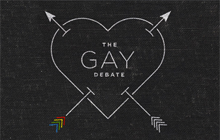Before we begin our discussion of gender as it relates to social norms and public policy, we should first explore any differences and commonalities between gender and sex. At first glance, some might argue that these terms are interchangeable. However, upon closer examination, most would concede that these terms are in fact distinct, though related.
The following definitions have been taken from the American Psychological Association’s guidelines (Source).
Sex refers to a person’s biological status and is typically categorized as male, female, or intersex (i.e., atypical combinations of features that usually distinguish male from female). There are a number of indicators of biological sex, including sex chromosomes, gonads, internal reproductive organs, and external genitalia.
Gender refers to the attitudes, feelings, and behaviors that a given culture associates with a person’s biological sex. Behavior that is compatible with cultural expectations is referred to as gender-normative; behaviors that are viewed as incompatible with these expectations constitute gender non-conformity.
Gender identity refers to “one’s sense of oneself as male, female, or transgender” (American Psychological Association, 2006). When one’s gender identity and biological sex are not congruent, the individual may identify as transsexual or as another transgender category (cf. Gainor, 2000).
Gender expression refers to the “…way in which a person acts to communicate gender within a given culture; for example, in terms of clothing, communication patterns and interests. A person’s gender expression may or may not be consistent with socially prescribed gender roles, and may or may not reflect his or her gender identity” (American Psychological Association, 2008, p. 28).
Sexual orientation refers to the sex of those to whom one is sexually and romantically attracted.
Categories of sexual orientation typically have included attraction to members of one’s own sex (gay men or lesbians), attraction to members of the other sex (heterosexuals), and attraction to members of both sexes (bisexuals). While these categories continue to be widely used, research has suggested that sexual orientation does not always appear in such definable categories and instead occurs on a continuum (e.g., Kinsey, Pomeroy, Martin, & Gebhard, 1953; Klein, 1993; Klein, Sepekoff, & Wolff, 1985; Shiveley & DeCecco, 1977). In addition, some research indicates that sexual orientation is fluid for some people; this may be especially true for women (e.g., Diamond, 2007; Golden, 1987; Peplau & Garnets, 2000).
In general, sex is binary (with the exception of intersex), while gender is seen as more fluid. Watch the following TED Talk, in which Sam Killermann articulates his position regarding the differences between sex and gender.
While the previous video outlines the perspective that gender is cultural, relative, and dynamic, the widespread Christian assumption is that sex and gender, while different terms describing different things, are inextricably linked and God-given. Consider this quote from Katie McCoy of BiblicalWoman.com for one expression of this position:
We believe that gender is God-given, not socially constructed or self-determined; that gender distinctions are rooted in creation and manifested in biological differences, transcending social customs and cultural stereotypes; that being created as a woman is an essential aspect of our identity (Gen. 2:18-25; Matt. 19:4; Mark 10:6)” (Source).








